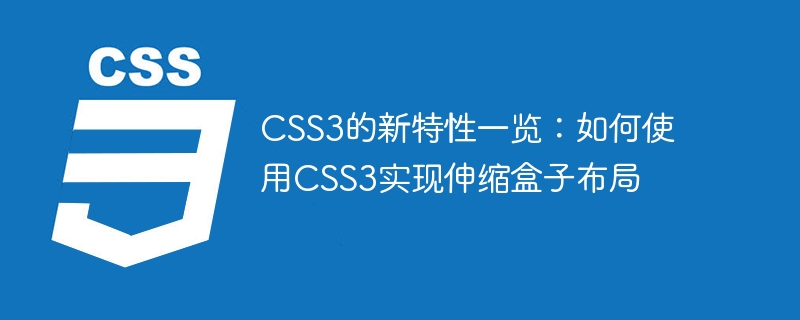

Overview of the new features of CSS3: How to use CSS3 to implement telescopic box layout
CSS3 is the latest version of CSS, which introduces many exciting new features. One of them is flexbox layout, which provides us with a more powerful and flexible way to layout and arrange elements. This article will introduce the CSS3 retractable box layout and its application, and how to implement it using code examples.
1. What is telescopic box layout?
Telescopic box layout is a model used for web page layout. By using the flexbox property of CSS3, we can arrange web page elements in a flexible way, whether horizontally or vertically. This layout model can simplify our code and provide better responsive design effects.
2. How to use retractable box layout?
To use the flex box layout, we need to apply the flex attribute on the parent element. By setting the value of this attribute, we can control how child elements are arranged. The following are common flex properties and their usage:
3. Sample code
The following is an example of a navigation bar implemented by using the retractable box layout:
HTML code:
<div class="navbar"> <div class="item">首页</div> <div class="item">产品</div> <div class="item">关于我们</div> <div class="item">联系我们</div> </div>
CSS Code:
.navbar {
display: flex;
justify-content: space-between;
align-items: center;
}
.item {
margin: 10px;
padding: 10px;
}In this example, we apply the display: flex attribute to the parent element .navbar, indicating that it is set as a retractable box layout container. With the justify-content: space-between property, we distribute the child elements evenly on the main axis and center align the child elements on the cross axis.
4. Browser compatibility
Telescopic box layout is widely supported in modern browsers, including Chrome, Firefox, Safari and Edge, etc. However, some older browsers may not support the flex box layout. To ensure better compatibility, we can use prefixes such as -webkit- and -moz-.
5. Summary
By using CSS3’s telescopic box layout, we can layout and arrange web pages in a more flexible and intuitive way. This article introduces the concept and usage of flex box layout and provides an example of a navigation bar. I hope this article will be helpful for you to learn and use CSS3 retractable box layout.
(Note: The above example code is for reference only, and may need to be adjusted according to specific needs in actual application.)
The above is the detailed content of Overview of the new features of CSS3: How to use CSS3 to implement telescopic box layout. For more information, please follow other related articles on the PHP Chinese website!